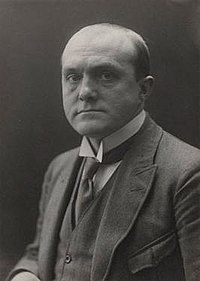Max Beckmann
| Max Beckmann | |
|---|---|

Max Beckmann, photograph by Hans Möller, 1922
|
|
| Born |
February 12, 1884 Leipzig, Saxony, German Empire |
| Died | December 27, 1950 (aged 66) New York City, New York, United States |
| Nationality | German |
| Known for |
Painting Sculpture Drawing Printmaking |
| Notable work | Christ and the Woman Taken in Adultery |
| Movement |
New Objectivity German Expressionism |
Max Beckmann (February 12, 1884 – December 27, 1950) was a German painter, draftsman, printmaker, sculptor, and writer. Although he is classified as an Expressionist artist, he rejected both the term and the movement. In the 1920s, he was associated with the New Objectivity (Neue Sachlichkeit), an outgrowth of Expressionism that opposed its introverted emotionalism.
Max Beckmann was born into a middle-class family in Leipzig, Saxony. From his youth he pitted himself against the old masters. His traumatic experiences of World War I, in which he volunteered as a medical orderly, coincided with a dramatic transformation of his style from academically correct depictions to a distortion of both figure and space, reflecting his altered vision of himself and humanity.
He is known for the self-portraits painted throughout his life, their number and intensity rivaled only by those of Rembrandt and Picasso. Well-read in philosophy and literature, Beckmann also contemplated mysticism and theosophy in search of the "Self". As a true painter-thinker, he strove to find the hidden spiritual dimension in his subjects (Beckmann's 1948 Letters to a Woman Painter provides a statement of his approach to art.)
Beckmann enjoyed great success and official honors during the Weimar Republic. In 1925 he was selected to teach a master class at the Städelschule Academy of Fine Art in Frankfurt. Some of his most famous students included Theo Garve, Leo Maillet and Marie-Louise von Motesiczky. In 1927 he received the Honorary Empire Prize for German Art and the Gold Medal of the City of Düsseldorf; the National Gallery in Berlin acquired his painting The Bark and, in 1928, purchased his Self-Portrait in Tuxedo. By the early 1930s, a series of major exhibitions, including large retrospectives at the Städtische Kunsthalle Mannheim (1928) and in Basle and Zurich (1930), together with numerous publications, showed the high esteem in which Beckmann was held.
...
Wikipedia
